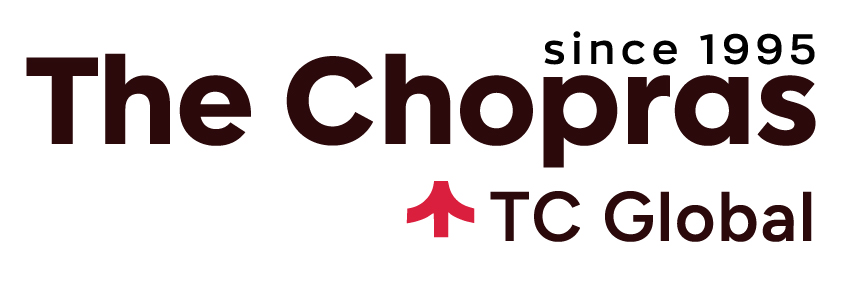Here’s an interesting quandary.
Sixty-five percent of children who are beginning their schooling today will end up working in jobs that don’t exist yet – says a new study by the World Economic Forum on the future of jobs.
How then does one prepare for such a future? Also, how has the education system adapted to address such a need?
India’s answer to that has been straightforward: Coding.
When you are applying for a job, it is customary to list your software skills on your resume. Until about a decade ago, it was fairly common to see people mention MS Office. It used to give them an edge.
That was then.
Today, it’s a given that you know how to use Word, Excel, or PowerPoint. What gives the edge back is a proficiency in programming languages and the ability to code.
For many, coding is associated with adjectives such as complex, intimidating and super-specialised. Today’s educators and EdTech specialists disagree. There used to be a time where computers and apps stood apart as a discipline, like medicine or law. However, with all industries being digitised, at least a basic knowledge of coding cannot be limited to the specialists. Just as we learn the basics of physics to understand the world around us, there is a need to learn coding to delve comfortably into the digital world that is all pervasive.
For those who are motivated, age is no barrier. Learning can happen at anytime. From a systemic standpoint, schools are beginning to introduce coding from the primary level onwards. The idea is for the child to learn the language of computers along with the basics of human communication and mathematics. There have been cases of prodigies who have written long codes and built applications at tender ages. These are, of course, the exceptions and not the rule. What children learn in cCoding classes is essentially Computational Thinking and Algorithmic Intelligence. In a lay person’s terms, children get exposed to logic, problem solving and creativity. They get introduced to the ‘why-s’ and ‘how-s’ of the technology that they are so dependent on. Children’s fascination with robotics and their innate immersion in the digital world provide ample motivation for them to learn. It also gears them up for a world that relies heavily on automation. Considering the fact that India exports millions of computer engineers worldwide, it does not hurt to have an early start.
In addition to modern schools offering Coding classes, a number of EdTech organisations have also sprung up to satisfy this demand. Programming and coaching centres that are proliferating all over the country generally use a common pool of tools and platforms—such as Code Studio, LightBot, Botley or MIT’s Scratch—which were created for a western market where teaching children to code is already a flourishing industry. In 2017, a Delhi-based EdTech startup called Eupheus Learning launched in India, a “friendly robot” called Cubetto that can teach the basics of coding to your kids. A UK-based organisation called the Raspberry Pi Foundation has set up Code Clubs to assist schools and other institutions that lack infrastructure. Bangalore-based ZugZwang Academy has an interesting model wherein they integrate coding, chess and mathematics for kids. MindChamp, Vedantu and Techykids are a few other players in the field. The biggest name in the industry, in the Indian context, is WhiteHat Jr that has been in the news for various reasons.
To place it in context, WhiteHat Jr is an EdTech startup founded by Karan Bajaj in 2018. The idea was to teach coding to children through one-on-one video classes. The ongoing pandemic caused a marked increase in the business of digit-learning platforms and WhiteHat Jr was generating an average revenue of $150 million by July 2020. It had about 4 million subscribers across the globe. In August 2020, Byju’s India’s biggest EdTech firm acquired WhiteHat Jr for $300 million in an all-cash deal. The staggering economics of this deal that was done over WhatsApp and phone calls gained attention of the media. It was also a clear indication of the current boom the EdTech industry is going through.
However, since its acquisition, WhiteHat Jr has been in the news for the wrong reasons. In October 2020, The Advertising Standard Council of India (ASCI) has asked the company to take down five of their advertisements for making “dubious and unsubstantiated claims”. The firm has also come under fire for suppressing dissent online. The scandal, however, has reached its peak with the case of “Wolf Gupta”. The firm had been using this character of “Wolf Gupta” in its advertisements, portraying a star student who had been employed by Google and Apple for substantial salaries. The fictional nature of this character did not see the light of the day until online whistleblowers filed cases against the company for false advertising. While using a fictional character in an advertisement is perfectly common, passing off the character as real, mixing fiction with facts and promising to make children into the next Sunder Pichai or Bill Gates crosses ethical lines. As a result of the ongoing lawsuit, all advertisements featuring “Wolf Gupta” have been taken down.
As mentioned earlier, 65% of children will be working in job profiles that don’t exist today. There’s a distinct lack of congruence between technological advancements and industry growth on the one hand and the education system on the other. Learning coding is one of the possibilities of bridging this gap. Like any skillset, it expands cognition, creativity and logical abilities but does not guarantee anything.
The story of WhiteHat Jr is a cautionary tale. Learning to code has become an essential skill, no doubt. It does give you an edge as a supplementary skill. But, it’s not (as it’s being made out to be) a silver bullet that will solve the future-of-skills issue and get you employed with Google or Apple for stratospheric amounts of money (as is being claimed).In addition, some educators have raised doubts about teaching children to code early on. First is the problem of time. While children might get comfortable with the general idea of coding, the chances are that programming languages might change entirely by the time the child becomes an adult. Second is their concern with the content of these courses. Problem solving skills and creativity cannot be taught overtly. The third concern is related to increasing stress levels and its impact on the psychological well-being of the child.
Trying to balance the demands of a future while providing a stress-free environment for children to learn and thrive requires delicate balance. It is like walking on a tight rope. The coding craze, while important, is also determined by politics of market and profit. It’s important to talk to children, understand their strengths and aptitudes to know what they could be inclined towards. If technology is their forte and interest, then coding might be for them. If not, they are better off doing what they love. If there’s one thing the next generation has the liberty of doing, is making professions of out passions. Coding may not be one of them.







![Best Universities in New Zealand for International Students [2025 Rankings]](https://tcglobal.com/wp-content/uploads/2025/09/Best-Universities-in-New-Zealand-for-International-Students-2025-Rankings-600x338.png)